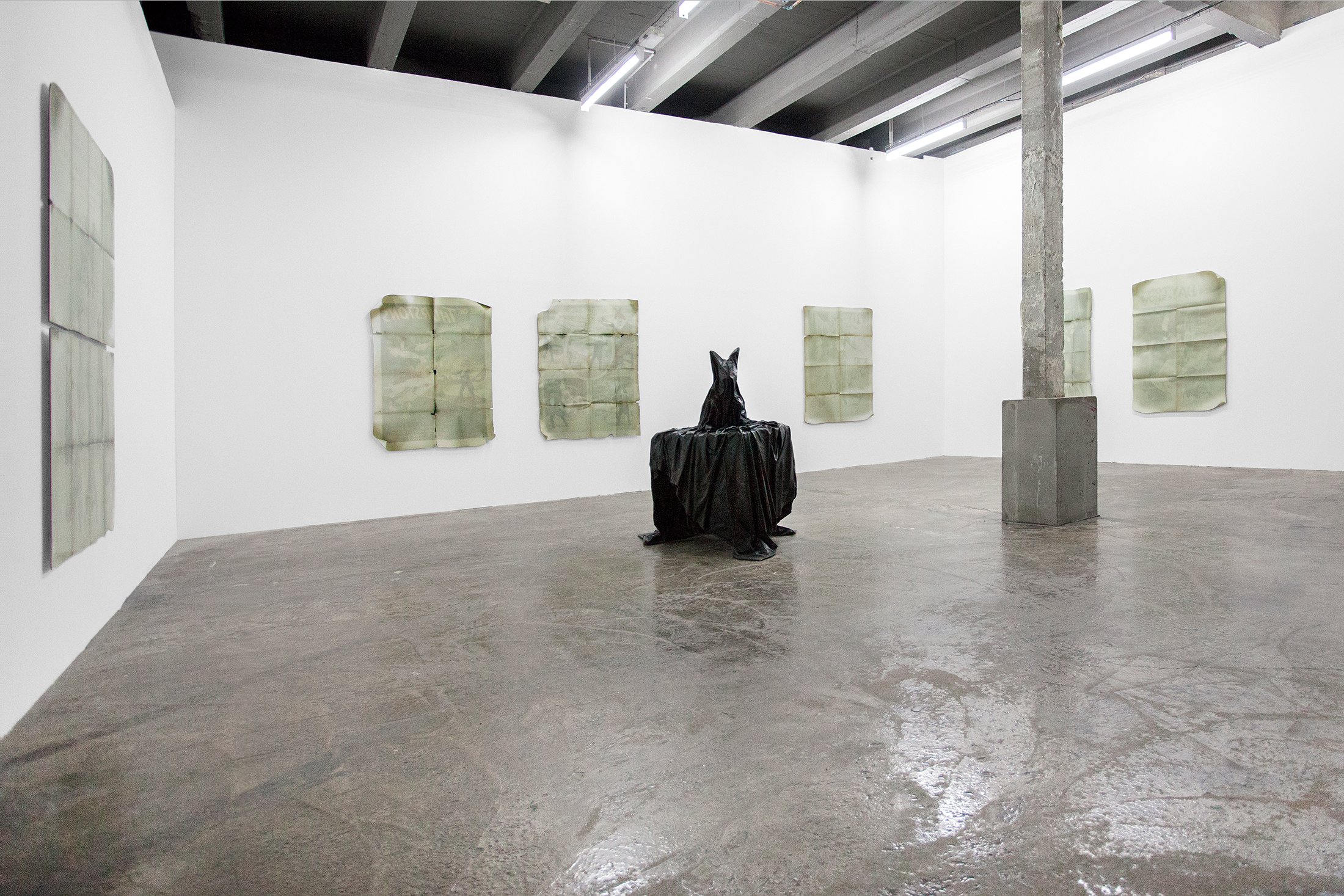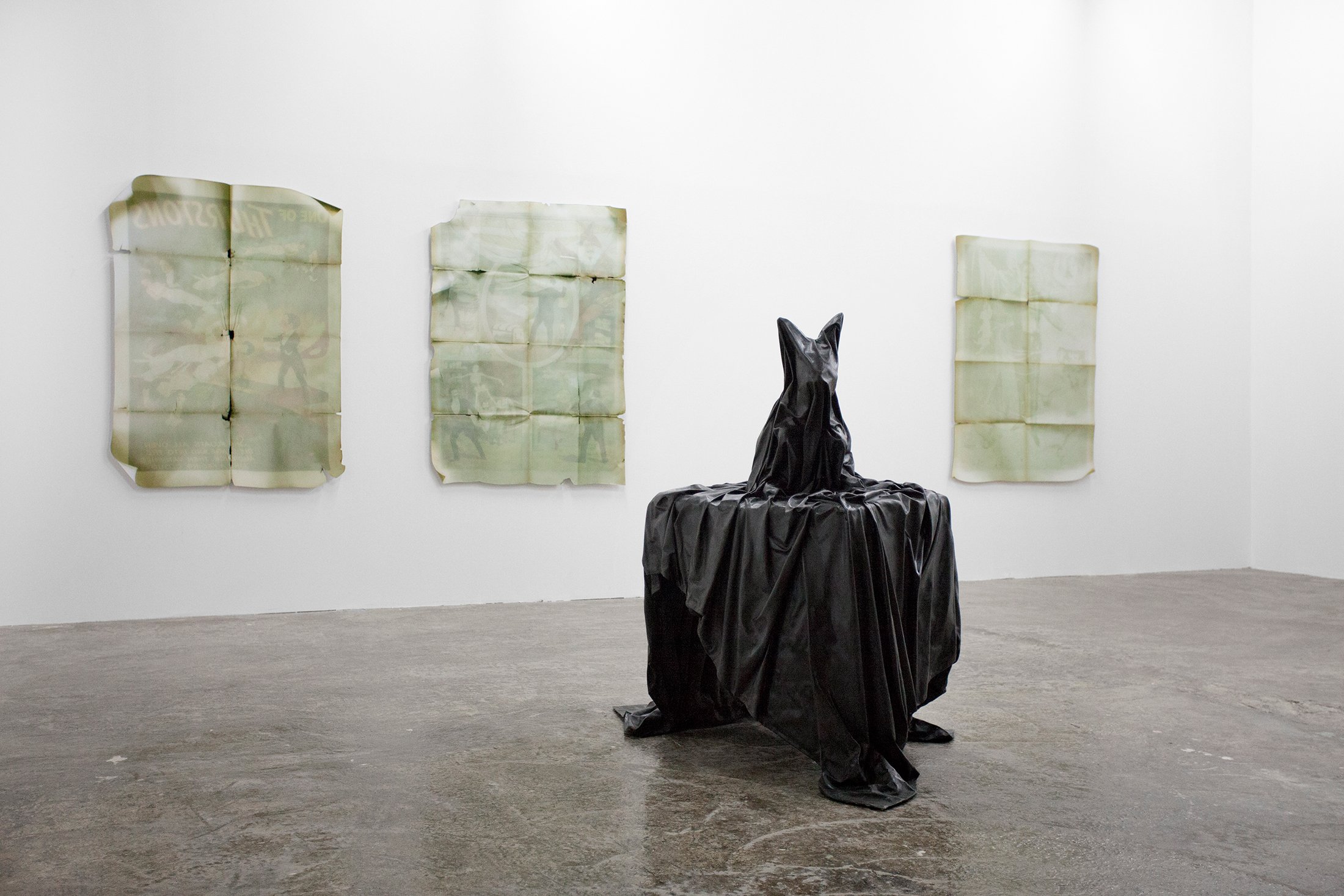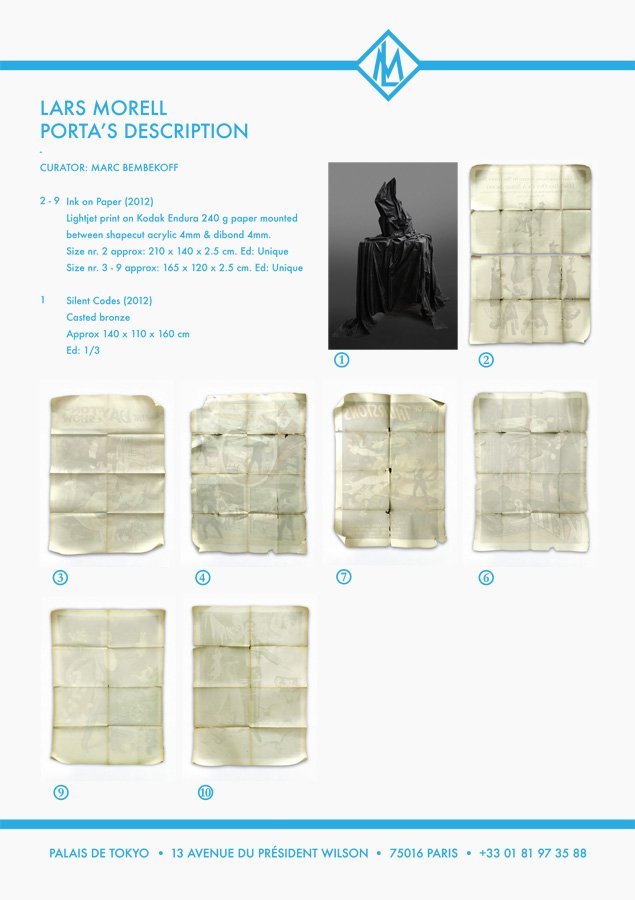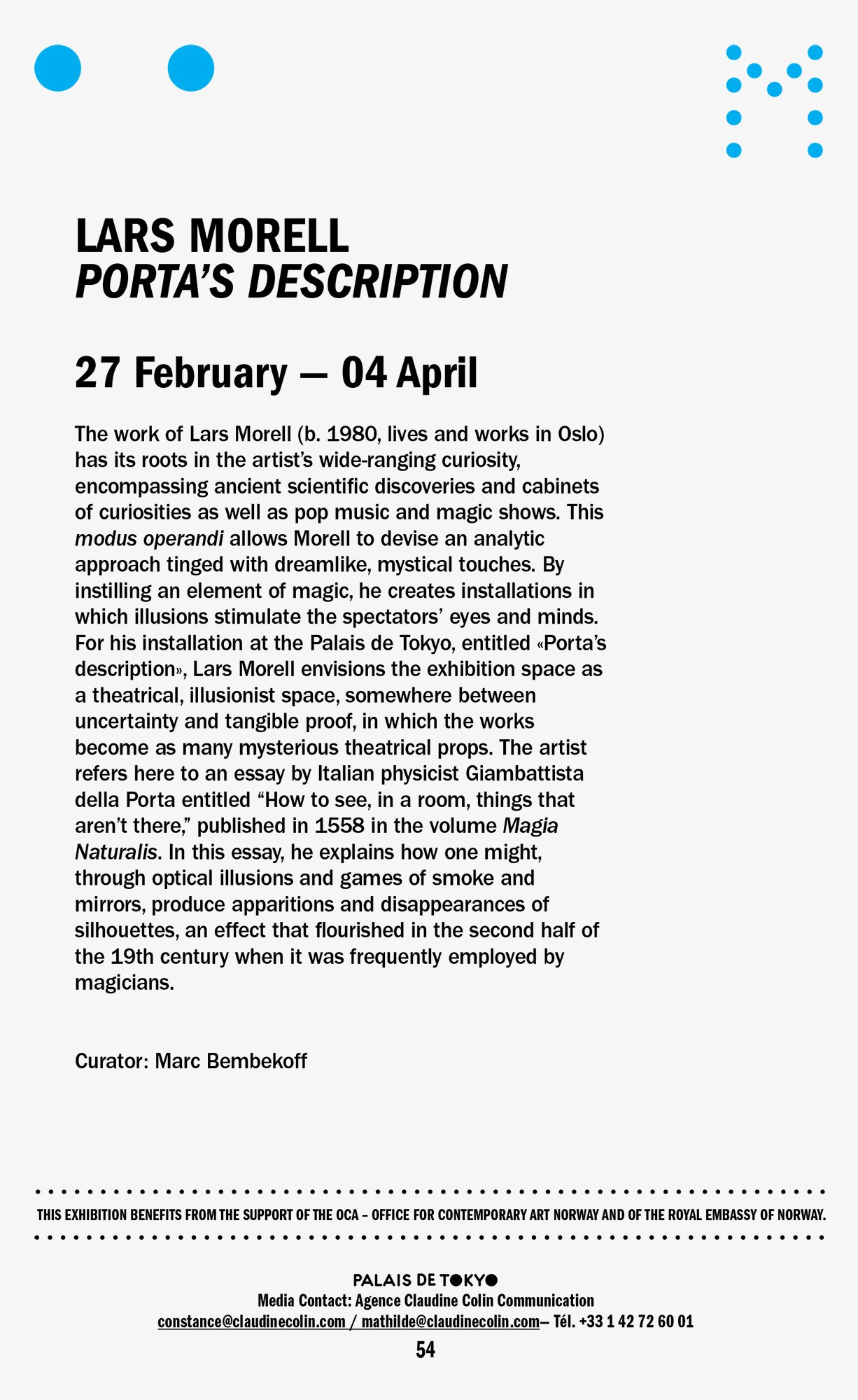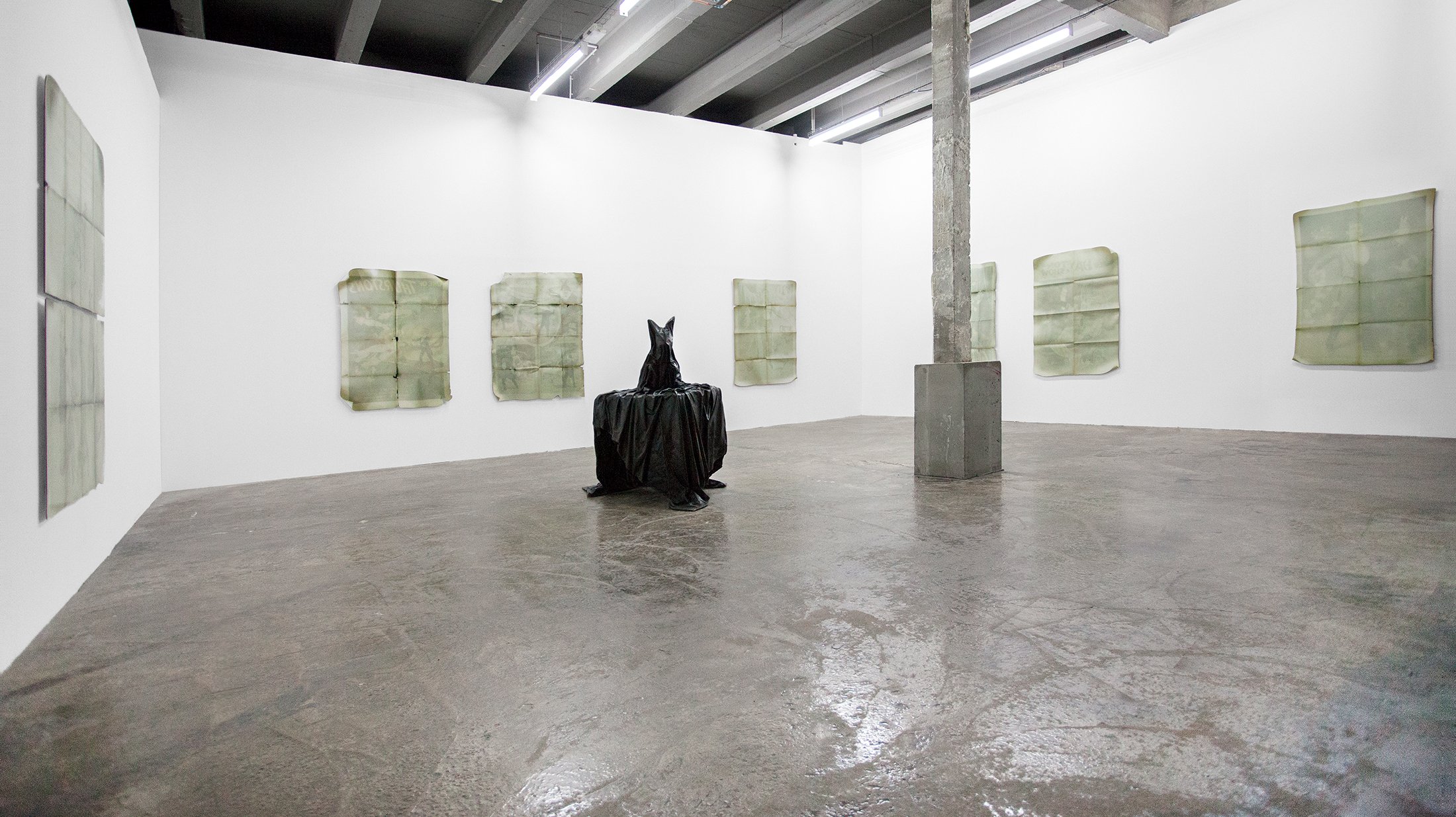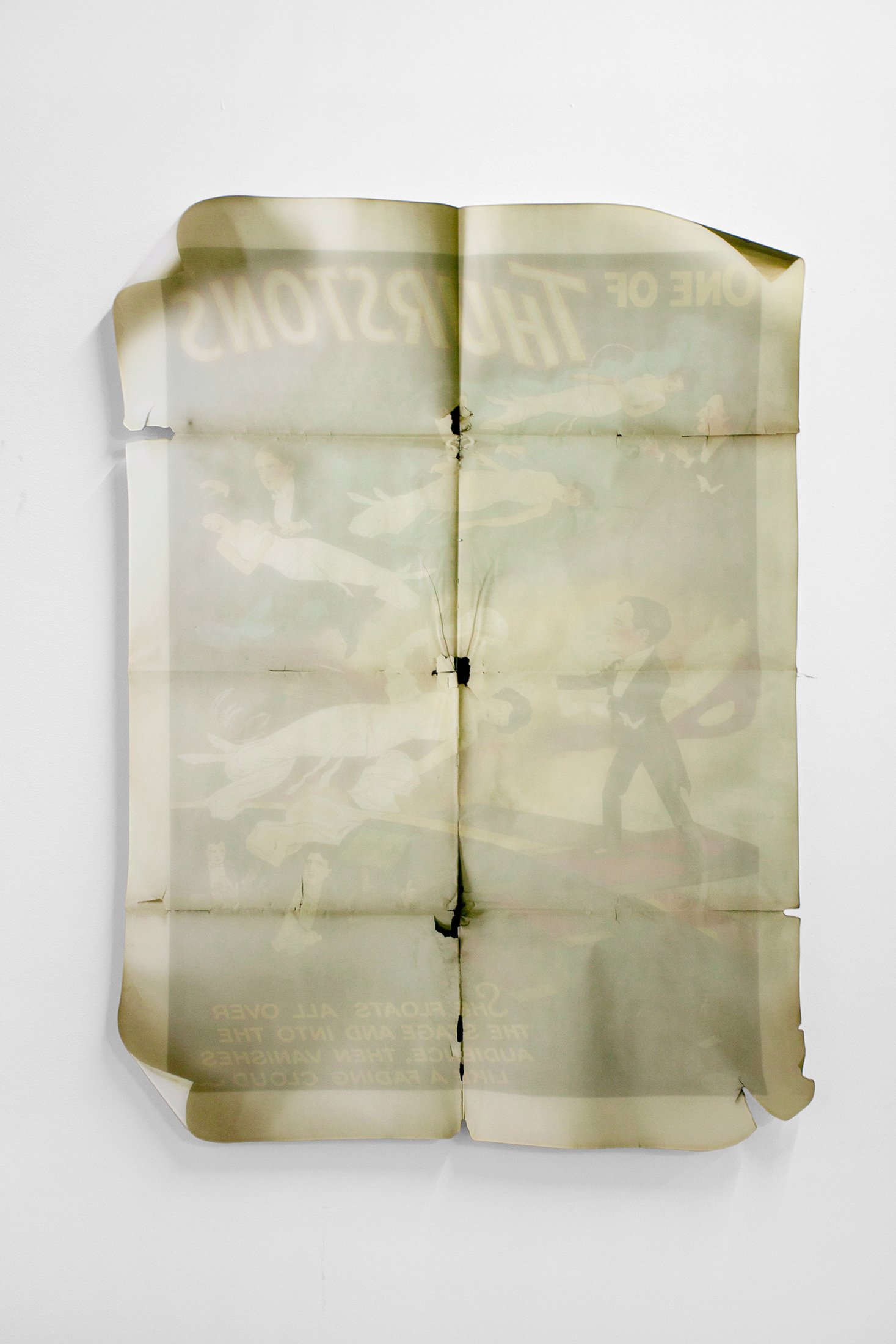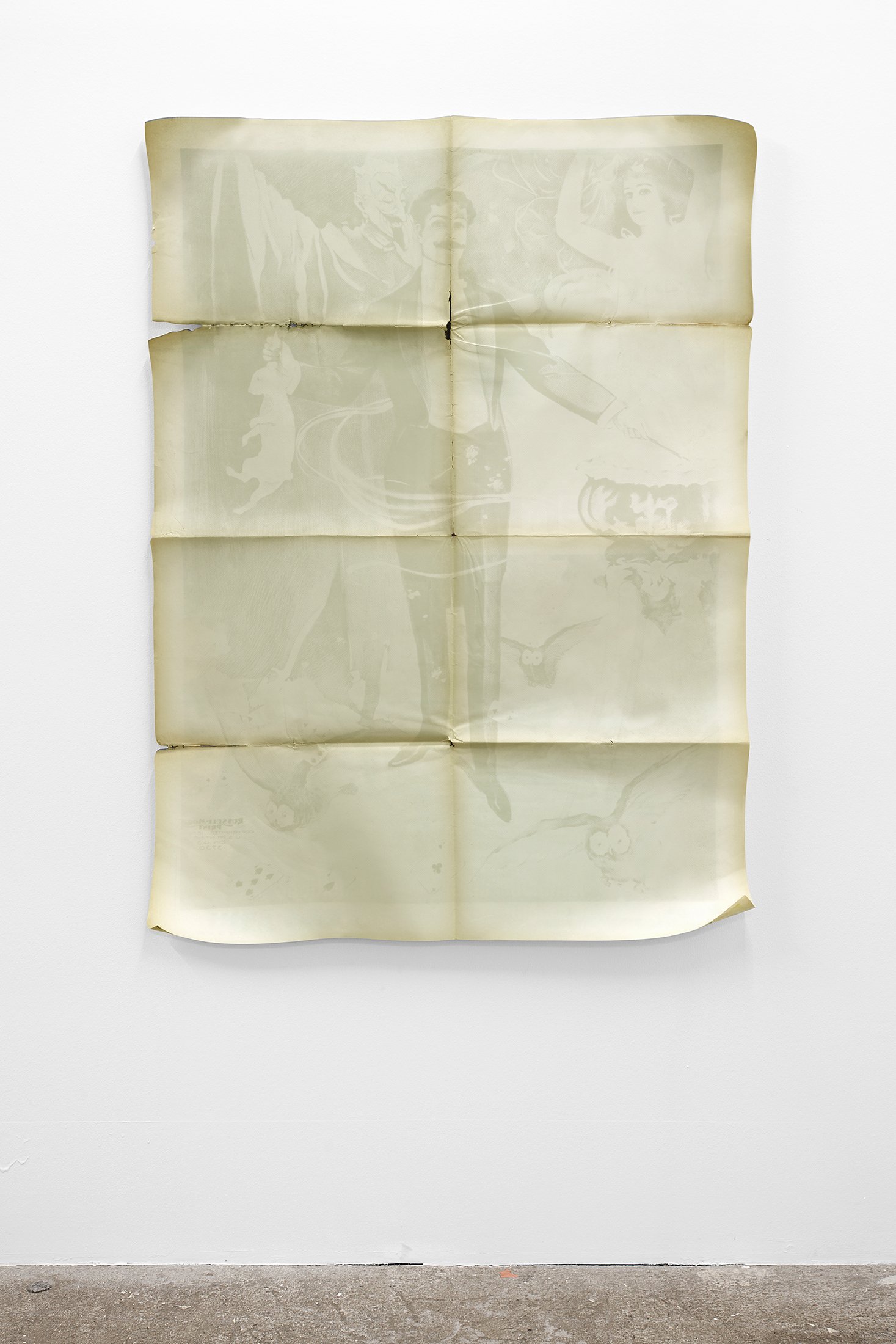Porta’s Description
27.04 - 04.04.2013
Palais de Tokyo, Paris
Curated by Marc Bembekoff
-
For his installation at the Palais de Tokyo, entitled 'Porta’s Description', Lars Morell envisions the exhibition space as a theatrical, illusionist space, somewhere between uncertainty and tangible proof, in which the works become mysterious theatrical props. The artist refers to an essay by Italian scientist Giambattista della Porta entitled 'How to see, in a room, things that aren’t there', published in 1558 in the volume Magia Naturalis. In this essay, he explains how one might, through optical illusions with reflective glass plates, produce apparitions and disappearances of silhouettes, an effect that flourished in the second half of the nineteenth century, when it was frequently employed by magicians. Palais de Tokyo's curator Marc Bembekoff states that ‘the work of Lars Morell has its roots in the artist’s wide-ranging curiosity, encompassing ancient scientific discoveries and cabinets of curiosities as well as pop music and magic shows. This modus operandi allows Morell to devise an analytic approach tinged with dreamlike, mystical touches. By instilling an element of magic, he creates installations in which illusions stimulate the spectators’ eyes and minds’.
About the artist: Lars Morell (b.1980 in Kristiansand, Norway, lives and works in Oslo, Norway) has since his graduation from Oslo National Academy of Fine Arts exhibited at Jan Wentrup, Berlin, Germany (2006); Jeu De Paume (2009) and Fondation d'entreprise Ricard (2010), Paris; France; Perla Mode, Zurich, Switzerland (2010) and the annual Autumn Exhibition, Kunstnernes Hus, Oslo (2011). In 2013 he received the Pollock-Krasner Foundation’s Grant. Recent exhibitions include ‘Hotel Paris’ at Galerie Nivet-Carzon, Paris and BYOB at Palais de Tokyo.
-
Marc Bembekoff: Your artistic practice intertwines references to the late 19th century with very contemporary features and issues. What is the source of your interest in that era?
Lars Morell: I’m interested in the point where the overt visual language of that time meets the analytical approach of contemporary art. A lot of my source material refers to the beginning of something new, such as the Lumière Brothers’ first photographic trick, spirit photography and various early stage illusions, what were considered at the time revolutionary new inventions. So I time-travel back to those events, to when they were genuinely new and unexplainable, in order to create a melancholic atmosphere. I'm exploring this world of visuals and hope to rework them into pieces that can generate new ideas and experiences.
MB: I suspect that by injecting a kind of magic in your work, you create artworks dealing with the revelation of images. Do you think that the beauty or the strength of an image is directly related to this concept of revelation?
LM: The link to magic interests me because of the similarity between the illusionist or magician’s process and that of the artist. I’ve always sought to create works that function on different levels. In a way, with the Ink on Paper (2011) series, I am playing with how the spectator views the work and its composition, colors, shape and motif. The idea for this series came from seeing a poster in a shop window, from inside the shop. Because the light came from outside, I saw the poster rather vaguely, as a transparency. Like this, when analyzed, this series only partly reveals its motif, and I invite the viewer to decide what is hidden behind the image. I also deal with invisibility and the question of where a work begins and ends. In 2008, I made an installation entitled Ghost Work. After in-depth research on various artists who had dealt with the notion of invisibility throughout history, I was thinking about what to do with this archive. In the end, I decided to exhibit it in a pile, on the floor. All the documentation I’d collected about these beautiful works was installed as a kind of failure, or a vain attempt to gather information on the invisible. The work was partly hidden during the exhibition, but those who had a closer look recognized those familiar images. But the time I refer to, when the jugglers stepped from the street corner to the stage and put on a suit and top hat, always had a very technical aspect to it.
MB: There’s even a religious connotation, hinting at the way people believe in images. To me, your Ink on Paper series evokes the holy shroud of Turin, particularly through the viewer’s mental process as he or she contemplates these almost empty frames. Given that you were raised in Norway, where Protestantism has replaced ancient paganism, have you ever considered these series as connected to a kind of religious belief?
LM: I come from a part of Norway where the church stands stronger than in other areas, the Christian belief holds society together. I find a lot of inspiration in religion and the discussions that it can generate during a Sunday dinner. Somehow it always comes down to what boat you are in and what beliefs you have, very similar to discussing art. For me, the viewing experience is often connected with how the idea is materialized. For instance, the series Ink on Paper is comprised of windows onto something you cannot fully see, but can only imagine is there, at the back of the image. You are part of the image as well because of how you see your own reflection in the glass it is mounted in—as you would see it through a window.
MB: Your installations always place the visitor at the very heart of an experience in which he can participate. You like to create stories, or fragments of stories, while developing your work. How does fiction participate in the process of your research?
LM: I tend to establish the idea for the show, or the "parameters," if you like. There is a certain atmosphere I try to build that results from the decisions I’ve made along the way. Through this core, the show mostly builds itself up. It’s often a very intuitive process, but of course with a basis in the research I have undertaken. For instance, my installation, entitled Hotel Paris (2012), radically transformed the gallery in which it took place, converting it into a hotel lobby. The gallery itself was really small, but I imagined that the floors above it could be connected to the ground floor. For me, it is very poetic to think of an inspired artist returning to his/her hotel after a long day spent, for instance, installing a show, then doodling and sketching on hotel stationary picked up in the lobby. In addition to wallpaper, a reception desk, a carpet, a hat from which smoke escaped, and an absinthe fountain, I of course made serigraphs on this imaginary hotel stationary. I used the motifs that result from placing a wet glass on a piece of paper. These green stains, made by the absinth glasses, hinted at various images borrowed from my research on early illusionists’ tricks.
MB: If the exhibition could be considered as a stage for a magic trick—as in your project for the Palais de Tokyo, inspired by Giacomo della Porta’s optical effects—are you interested in deconstructing the illusion?
LM: I often think of the experience of visiting a museum as going to the theatre. Art on stage, and the audience moves around it. Even though there are other people in the space, you are kind of alone with the works as you walk around them, making up your story of connections among them. For instance, with Porta’s descriptions, I find it very fascinating that he revealed his tricks, or at least described them in a written document. In magic circles, it is typically very important to keep secrets about how magicians actually perform the tricks on stage. In this way, Porta was a traitor. I guess I am the same here.
MB: Like Brecht, who always reminds the spectator that he is merely looking at a staged fantasy, do you consider your installations as fake environments? Or are you focusing on a way of making them as real as possible?
LM: That was a clever way of limiting the audience’s expectations. Visitors are often more aware of their surroundings when entering a fake environment, as they don't know what to expect. I think that most people, when entering an exhibition space, want to be seduced or at least inspired in some kind of way; well aware that everything they see is carefully constructed to play with them under the given circumstances. Without being too pretentious, I like to think that my works appear in the space between the visitor and the work itself. It’s neither just the work nor just in the mind of the visitor; the work fully exists in a kind of vacuum in between the two. Having said that, I also think that feelings of disappointment or dissatisfaction can be quite powerful.
Lars Morell Born in 1980 in Kristiansand. Lives and works in Oslo. Graduated from the National Academy of Fine Arts in Oslo in 2005. Amongst his recent participations in group shows: “BYOB,” Palais de Tokyo (Paris, 2012); “No Base,” Vigeland-museet (Oslo, 2011); “Fiction,” Fondation d’Entreprise Ricard (Paris, 2010); “Cut Ups,” Centrum fur Fotograpfi (Stockholm, 2009);Nationalmuseum (Berlin, 2008).
-- "Porta’s Description," solo exhibition by Lars Morell as part of Modules – Fondation Pierre Bergé – Yves Saint Laurent, from 27/02/13 to 04/04/13, at the Palais de Tokyo.
Marc Bembekoff is a curator at the Palais de Tokyo.
